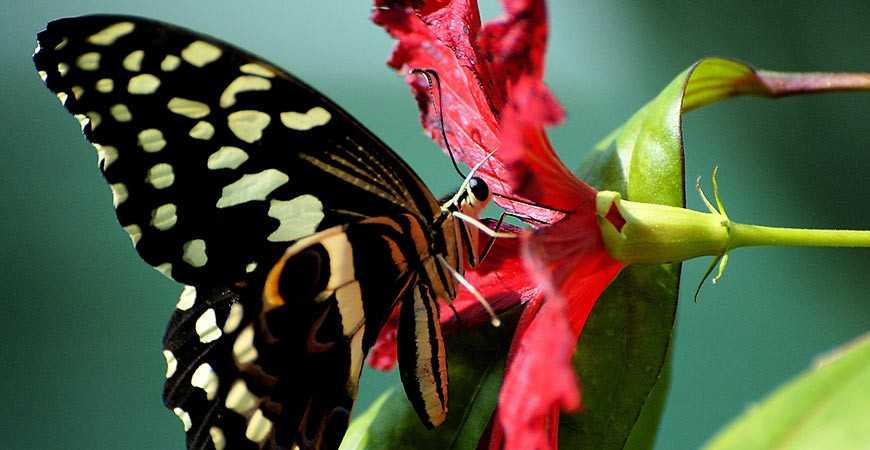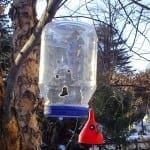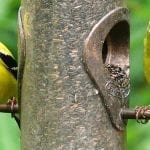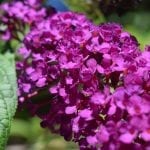
8 Plants that Attract Butterflies and Hummingbirds
When you choose which flowers to plant in your garden, you probably think about things like shape, size, color and bloom time. If you’re only thinking about the flowers’ appearance, though, you’re missing out on a big way that flowers can beautify your property.
Some hardworking blooms not only look pretty in their own right–they also attract fascinatingly gorgeous butterflies and hummingbirds. Choosing among these attractive plants will help you make the ground and the air in your garden explode with color.
Experts recommend that you choose butterfly and hummingbird-attractive flowers in a variety of colors to keep your “guests” interested, and that you make your garden a welcome environment in other ways, such as providing good shelter for butterflies to lay their eggs.
It’s also a good idea to plant both perennials, which will come up year after year, and annuals, which will bloom for long periods. Make sure any perennials you plant are suited for the USDA hardiness zone where you live, and choose perennials that bloom at different times of year to keep butterflies and hummingbirds popping by for visits all season long.
Here’s a list of some butterfly and hummingbird plants that have a good range of sun requirements, bloom times and other uses. Choose some of these for your flower garden, sit back, and enjoy the show!
To Attract Butterflies
The butterfly bush is a large perennial shrub that blooms midsummer to fall. Its plentiful blooms grow on spikes, can be white, violet, pink, blue, red or yellow, and are irresistible to many species of butterfly.
The fragrant blooms also make lovely cut flowers. This low-maintenance shrub can grow to a height and spread of 5 to 10 feet. Butterfly bushes are hardy in USDA zones 5 through 10.
The popular purple coneflower is a perennial that produces large daisy-like pink or purple blooms from midsummer to fall. It is tall at 24 to 48 inches, and has a spread of 12 to 18 inches.
Coneflowers like full sun, and make good container plants, border plants or groupings. They are hardy in USDA zones 4a to 9a.
Dill is an annual that will supply fresh herbs for your table as it attracts butterflies to your garden. It works well as a potted plant or a border plant and prefers full sun.
Its small yellow flowers bloom throughout the summer and make good cut or dried flowers. Dill grows to a height of 12 to 18 inches and a spread of 8 to 12 inches.
To Attract Hummingbirds
This hardy, fragrant perennial is native to North America, and attracts both hummingbirds and butterflies. Bee balm works well as a border plant or in groupings, and is fast-growing.
It will grow to a height of 24 to 30 inches and a spread of 24 to 36 inches. Bee balm produces gorgeous medium-sized blossoms of bright red, pink or salmon color in early- to mid-summer.
These flowers have a unique “spiky” appearance that really catches the eye. Bee balm will grow well in areas of full sun or partial shade, and is hardy in USDA zones 4a to 9a.
This perennial produces vibrant yellow flowers in the spring. Columbine grows to a height and spread of 18 to 24 inches, and its blooms attract butterflies as well as hummingbirds.
Columbine will grow in partial shade or full sun, and works well in the garden or as a container plant. It is hardy in USDA zones 4a to 10a.
Petunias are an annual in most of North America, because they are only hardy as perennials in USDA zone 11 (Puerto Rico). The many varieties of petunia come with blooms of yellow, white, lavender, red, purple or pink.
Petunias are beautiful in window boxes, hanging baskets or other containers. They like full sun, and grow to a height of 6 to 15 inches and a spread of 8 to 12 inches. Petunias for supplying hummingbird food, which will lead to them frequenting your garden soon!
This flower gets its colorful name from its distinctive heart-shaped, dangling pink blossoms with little “drops” coming out of the bottom. Bleeding hearts are perennials suited for USDA zones 5a through 9a.
They are one of the few flowers that will flourish in areas of full shade, which makes them perfect for those sun-deprived areas of your property. They thrive in partial shade, so don’t plant them where they will receives full sun for much of the day.
Bleeding hearts grow to a height of 12 to 15 inches and a spread of 12 to 18 inches. They make good border plants, container plants or groupings, and cut flowers to enjoy indoors.
Carpet bugle, also called bugleweed, is a deer-resistant perennial that is very useful as ground cover and to prevent soil erosion. Its small deep-blue blooms grow in large clusters on eye-catching upright spikes, and attract butterflies as well as hummingbirds.
Carpet bugle blooms from spring to midsummer and is hardy in USDA zones 3a to 9b. Carpet bugle thrives in areas of shade to partial sun. It grows to a height of 3 to 6 inches and a spread of 24 to 36 inches.
Add some of these blooms to your garden, and enjoy your colorful visitors!
Try the Wet & Forget family of products today, and let our easy solutions for everyday problems give you more time to spend in your garden!
Photos by Derek Ramsey, flemming christiansen, and Marcial4.















